Michelle Angela Ortiz uses public art to address detention and deportation issues
Michelle Angela Ortiz is a child of immigrants, born and raised in South Philadelphia—a community she describes as one that has benefited tremendously from the immigrant communities that have migrated into the area.
“I live a block away from one of the oldest outdoor markets in the country that has been thriving on the work, sweat, and investment from immigrant families from over 100 years, from Italian to Mexican and Central American immigrants,” she says, referring to the South 9th Street Italian Market, the oldest continuously-operated outdoor market in the country.
Her family is from Colombia and Puerto Rico, and her upbringing as a child of immigrant parents has informed her work on several levels.
“The work I have done as an artist has been centered on investing back into the community I feel the most connected to,” she says. “Being in the neighborhood I grew up in, I see how much has evolved, what has changed, and what has remained the same. In my work, I’m really thinking about how families like my own have come to this country to provide a better opportunity for their children.”
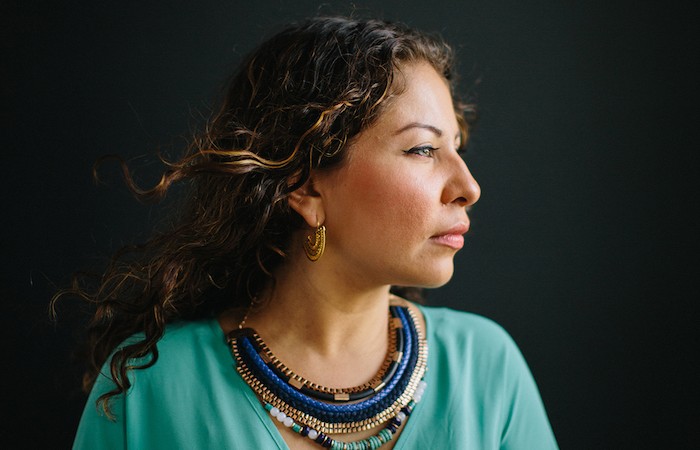
She has been creating work that addresses issues that impact the South Philadelphia community, as well as any and all urban communities with immigrant and low-income populations (so, all of them), for the past two decades. She has worked with youth, community members suffering with mental health issues, and formerly incarcerated men reentering society as artists trying to invest their art back into the community. In addition to her work in the City of Brotherly Love, she has done independent projects in different parts of the U.S. as well as Costa Rica, Ecuador, and Mexico, and has been an Arts Envoy for the U.S. Bureau of Educational and Cultural Affairs in Cuba, Honduras, Spain, and Fiji.
“What has been consistent in the work I do is building on the existing resources and power that already exists within the community,” she says. “That can be supporting local artists, sharing new tools and supporting the work they’re doing, but also recognizing what resources already exist within the community—the skills sets, knowledge, and experience.”
When doing work in any community, her motto is always, “This is not charity; this is collaboration.”
“Although I’m bringing a set number of skills and knowledge, they do too, as well as a cultural richness,” she says. “I really collaborate with community members and work on building these skill sets together whenever I do a project.”
For the past several years, Ortiz’s work has focused on issues around immigrant detention and deportations, and most recently she has focused primarily on family detention through large-scale public works.
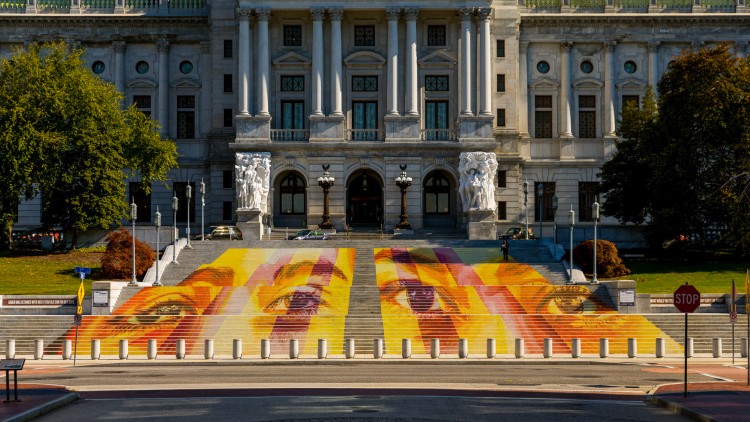
“I think about how my work can be both powerful and poetic, the role that beauty plays, and how transforming a huge wall or creating a huge installation on the steps of the State Capitol Building serves as a visual platform to talk about issues not often heard or just ignored,” she says. “I believe that public art, especially at a really large scale, demands your attention for you to take a look, be curious, and ask questions. It’s a way to be able to garner that interest and help people to take it a step further, be curious, and want to know more.”
She began the Familias Separadas project in 2013 during the rise of deportations in the U.S. The project is centered on moving people’s attention away from the statistics and numbers in the media to actually seeing the mothers, fathers, and children affected by deportation and detention in Pennsylvania. The first phase of the project happened in Philadelphia in 2015 with community members from Juntos, a Latino immigrant rights organization. The large-scale, site-specific public art installations were featured in Open Source through the Mural Arts Program. Each artwork was installed in high-traffic areas, including the 9th Street Italian Market, LOVE Park, City Hall, and the Immigration Customs Enforcement Agency (ICE) field office. The installation on the street in front of the ICE office read, “We are human beings, risking our lives, for our families & our future.”
“I found it was really interesting to talk about these installations and represent them in a city where we have all these symbols of freedom and democracy, and yet just two hours away we have one of the most aggressive ICE facilities in the country that is incarcerating families,” Ortiz says. “We pride ourselves on being a ‘sanctuary city,’ but the immigrant community here is still dealing with the constant fear of ICE.”
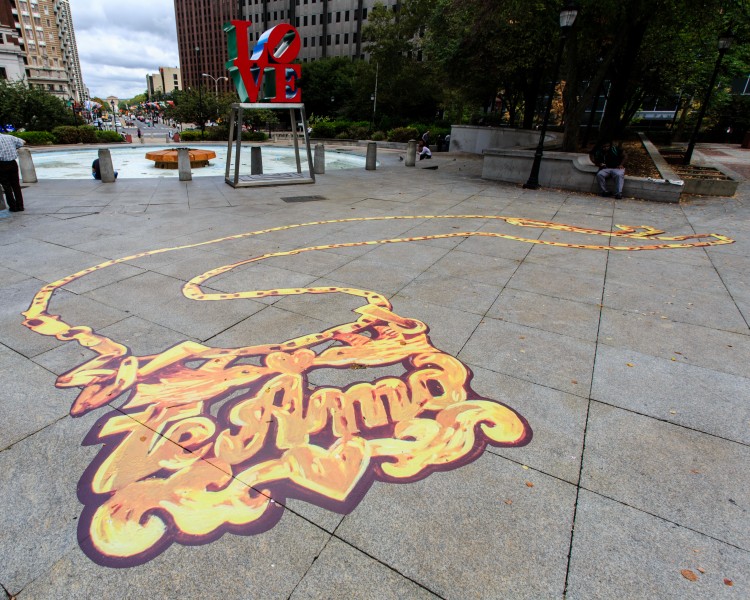
In 2017, with the support of the Rauschenberg Artist as Activist Fellowship, she began phase two of Familias Separadas in Harrisburg, the capitol of Pennsylvania, with her community partner the Shut Down Berks Coalition. This phase of work focused on the stories of families detained at the Berks Family Residential Center, a soft-sounding name for what is actually one of three immigrant detention centers in the country that incarcerates families. Berks has incarcerated children as young as nine weeks old along with their mothers and fathers, and is notorious for the numerous health and human rights violations accusations against it, including testimonies of medical neglect and sexual assault.
For the Familias Separadas project, Ortiz worked with four mothers and their children for a five-month period during their two-year-long detentions at Berks—mothers who had organized hunger and labor strikes within the facility to protest the conditions within it. She was able to interview these mothers before, during, and after their detentions, and used the words and stories of these women as well as illustrations she worked with them to create for several large-scale public art installations.
The eight installations that Ortiz put up around Harrisburg in November 2018 included an 88-foot-long temporary installation on the steps of the Pennsylvania State Capitol that was simply the eyes of one of the mothers, Karen, as well as her son’s, who had attempted suicide twice while in detention—something that is common in such detention facilities. After 600 days of detention, Karen and her son were deported back to El Salvador.
“The intention [with this piece] was to bring the images of Karen and her son to the steps of the policymakers and government officials who have the power to shut Berks down,” says Ortiz. When the piece was installed, over 200 people gathered the Capitol steps as part of a statewide protest to end family detention in Pennsylvania. The protestors then marched from the Capitol steps to a mural, created by Ortiz in Allison Hill, where the immigrant community resides in Harrisburg. The mural features the words from another mother, Delmy: “Mi hijo es el unico que me da fuerza” (“My son is the only one who gives me strength”).
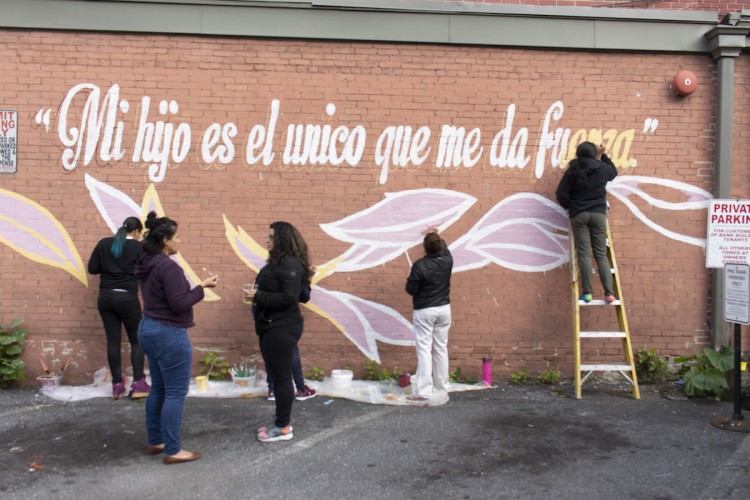
“The words of Delmy serve as inspiration for the immigrant community in Allison Hill who continue to thrive through the constant attack from local and state police collaborating with ICE raids,” says Ortiz. “The artwork represents the stories and phrases from the mothers and the locations of each piece responds to it’s surroundings. The message on the Capitol steps is direct to the viewer where as the message in Allison Hill is intended to uplift the immigrant community.”
Ortiz worked on this phase of Familias Separadas for two and a half years, and from it also produced a 30-minute documentary highlighting and centering the stories of the four mothers called Las Madres de Berks. Each of the participants had final approval in how her words and stories were represented in the film.
“I’m really proud of this documentary,” she says. “You hear the voices of the four mothers, see their children, and listen to their stories. They are victims of the system, but in the film you can see their power and resilience as they continue to push through, even after dealing with the trauma of being detained and still having to report to ICE regularly.”
Ortiz also feels that it’s important to include the voices of the affected families in the larger conversation around family detention. “What gets lost in the mainstream media is the representation of love that these mothers and fathers and families have for their children,” she says. “What we have seen in the media is the impact of them being separated and the difficulty of parents trying to reconnect with children that have been separated during detention. Captured in my film are the rare intimate moments of a mother singing a song to calm her child when they were in detention, or the simple act of a mother comforting her sick or scared child in bed which was prohibited at the Berks family prison.”
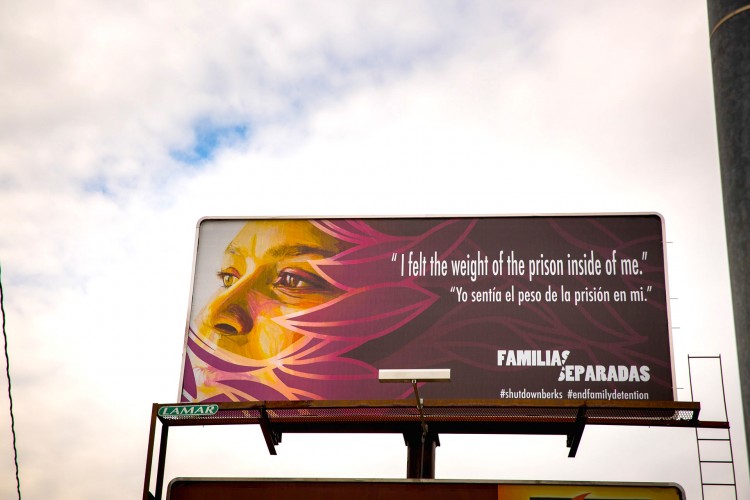
A critical component that we miss in mainstream media coverage is the love that makes these parents willing to take these enormous risks to leave their home countries in the hopes of creating a better life for their children.
“I feel that with the film and these installations and the other work that I’ve done, that I’m moving people away from feelings of fear and anger to feelings of empathy and connectedness,” she says. “Getting people to learn about this issue creates awareness and moves people to the direction of taking action.”
Berks is located two hours from Philadelphia. Federal law dictates that no child is supposed to be detained for more than 20 days; Ortiz says that the four mothers she interviewed were four of 14 mothers with children detained for over 600 days. While the mothers and children were kept in the same room, they were threatened with separation when the mothers went on hunger and labor strikes or did anything else considered out of line. For the families that have since been released but still have to report to ICE regularly, if they incur a minor infraction, fail to report on time, or refuse to let ICE agents into their homes, they can still be separated. The fear of separation constantly looms over these families.
“People think that it’s only happening at the border, but even in detention there is still a threat of being separated from your child,” explains Ortiz. “When we talk about family separation, it’s not just at the border. It continues on beyond that.”
The Berks facility has a laundry list of human rights abuses which the Shut Down Berks Coalition organized on that led to the Pennsylvania Department of Human Services’s decision to not renew its license in February 2016. Since then the county has appealed this decision and the license case has been languishing in bureaucratic proceedings, which is why the coalition is calling for an Emergency Removal Order (ERO), an action the Governor can take at any point during the appeal. An ERO would ensure that families are not detained in the facility while the appeal case continues.
There are Pennsylvania state representatives and city council members who have been very vocal in denouncing Berks, including Mayor of Philadelphia Jim Kenney, whose voice can be heard in the opening of Ortiz’s documentary saying that these families are “no threat to our city or our country” and that Berks shouldn’t even exist. Protestors want to see it cease operating as a detention center and instead be used as an opioid treatment facility, as Berks County is suffering from the opioid crisis like so many other parts of the country. Shutting down Berks would put an end to family detention in Pennsylvania and oppose the current administration’s stance with regards to immigration and family separation.
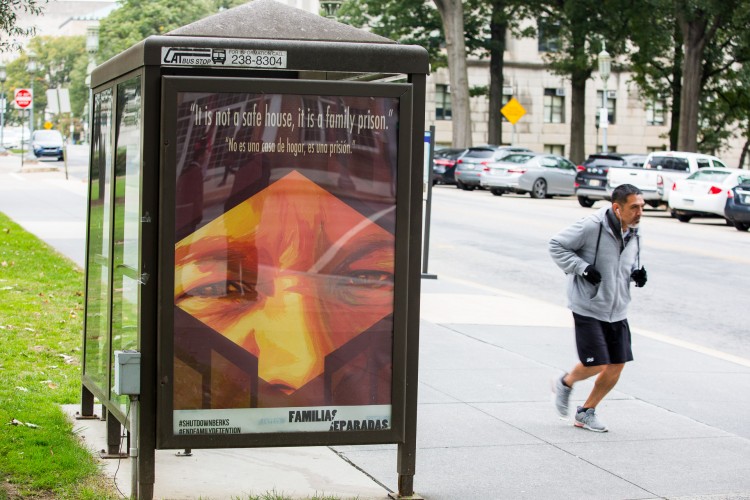
Despite all this, Ortiz says, Philadelphia is a welcoming city for immigrant communities, and as a so-called “sanctuary city” it is on the right path, currently offering sanctuary to three immigrant families.
“Our mayor has expressed the importance and acknowledged the contribution of immigrants in our community,” she says. “When I say we’re ‘on a path’ towards truly being a sanctuary city, that’s mostly because we still have an ICE facility in our city. Ideally we wouldn’t have that facility at all, or have ICE agents patrolling certain communities causing fear and intimidation. But there have been some strides and necessary steps taken.”
For example, Philadelphia prohibits local law enforcement from collaborating with ICE. The city also has an Office of Immigrant Affairs that honors and pays homage to immigrant families and the cultural richness they have brought to the city.
Even still, Ortiz found it surprising when she was working on phase one of Familia Separadas that she heard from so many people who said they didn’t know that family separations were happening in Philadelphia and that ICE was still raiding.
“That first phase was really about connecting to folks who knew nothing,” she says. “The installations created for the first phase were presented in very public spaces, like the ICE enforcement building and LOVE Park. It was really important to place these installations in very public places where I knew a number of people would pass by who knew nothing about this issue. This was a way to get some education out around this issue and raise awareness about it.”
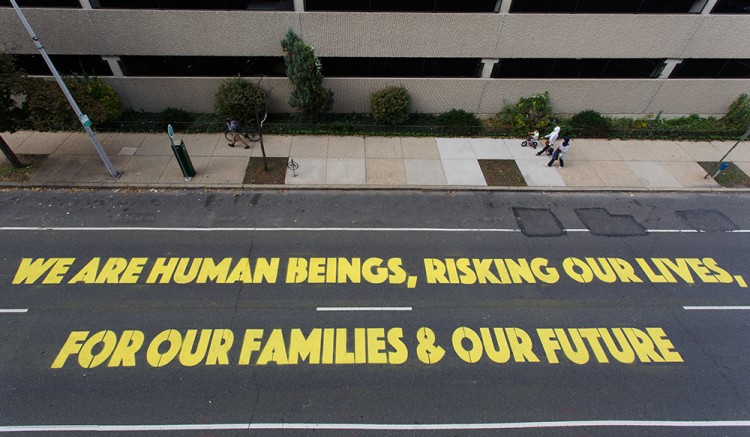
Ortiz is currently showcasing the artwork that was made in collaboration with the participating mothers during phase two of Familia Separadas as well as screening Las Madres de Berks in various locations around Pennsylvania. The documentary is instrumental in her efforts as an artist to humanize the immigration conflict, and to also give a platform for those directly affected by anti-immigration policies and rhetoric to make their voices heard.
“There is a need as an artist to inform the public and to not shy away from what these families are dealing with, but there’s a whole other part of this work in which I’m directly working with families to really hold their stories with care and provide these moments of healing for them to understand how their stories are inspiring others,” says Ortiz. “In dealing with the system constantly trying to strip them of their humanity, I ask them what is their vision of future, what are their hopes for themselves and their children, what is their strength in a moment of darkness, all to reinforce that inner strength that they were feeding off of in order to survive.”
